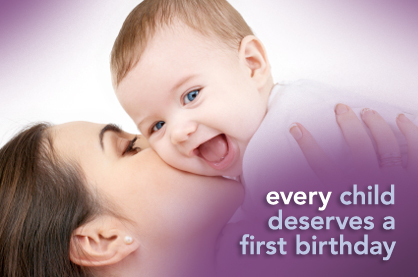Losing a baby: The tragedy of stillbirth and sudden infant death
There is perhaps nothing as heartbreaking as the death of a baby. Yet, every year in the United States, more than 25,000 babies are stillborn and more than 4,500 babies die from Sudden Infant Death Syndrome. Even more tragic, many of these deaths could have been prevented if parents had been properly informed.
October is Sudden Infant Death Syndrome Awareness Month. Consider becoming aware.
Sudden Infant Death Syndrome is defined as the sudden and unexpected death of an infant 12 months old or younger in which the cause of death was not determined, whereas stillbirth is considered the death of a fetus after 20 weeks of pregnancy.
SIDS occurs with an ostensibly healthy baby, most often between two and four months old. Researchers have determined that the vast majority of cases are due to dangerous sleep practices, including bed sharing and laying an infant on its stomach to sleep.
“There are more than 70 stillbirths each and every day in the United States,” said staff at First Candle, a nonprofit dedicated to promoting infant health and survival. “Wouldn’t you want to know if your baby was in distress?” There are signs.
While there is no way to completely eliminate the risk of SIDS, First Candle suggests a variety of steps to reduce this risk. These recommendations include laying your infant on his or her back to sleep, using a safety-approved crib or bassinet for the first six months, placing nothing in the crib but the mattress and sheet, using a pacifier when putting your baby down for a nap or nighttime sleep, and not exposing your baby to cigarette smoke.
Stillbirth can be reduced by eating a healthy diet, seeing a health care provider for proper prenatal care, keeping a log to track your baby’s movement to determine if there is a change in patterns, and being aware of the signs of premature labor, such as cramps or bleeding.
“If (these signs) occur, or if you experience decreased fetal movement, call your doctor immediately,” said First Candle staff. “Moms know babies best.”
Some infants, such as babies who are exposed to cigarette smoke and babies born prematurely, are at greater risk. But one very significant risk gives First Candle its mission: uninformed families. Staff claim the highest risk factor can, in fact, be uneducated parents who are not aware of safe sleep practices or who fail to follow the guidelines.
“Most people do not realize that SIDS is the leading cause of death of infants between one month and one year of age. Co-sleeping with a tiny baby in an adult bed has been shown to increase the risk of death up to 40 times,” First Candle staff explained. “Would anyone really want to risk those odds?”
Stillbirth can happen to babies that were always seemingly healthy. In the majority of deaths, a cause is never pinpointed. However, this stems from lack of investigation into the deaths rather than limited medical knowledge. Researchers do know that more frequent causes are placental abruption and other placental problems, cord accidents, birth defects/chromosomal abnormalities, uncontrolled diabetes, high blood pressure, pre-eclampsia and infections.
There is still much to be explained in the field of infant loss, but promising research is being conducted to shed more light on the issue.
“The first step to solving a problem is to understand it,” staff explained. “Advancements can come even as we await ‘bench science’ to further define the physiology of SIDS. If every parent were educated regarding safe sleep practices for their infant, and followed those guidelines, many future babies’ lives would be saved from sudden unexpected death.”
Infant death is a bigger problem globally than in the United States, with 98 percent of the 7,300 stillbirths each day occurring in low- and middle-income nations. There is also a racial correlation: Stillbirths among African American women are double that of white women.
Women are advised to be aware of smoking and obesity risks and to be monitored continually during their pregnancies. Mothers should also know that pregnancies lasting longer than 40 weeks are at increased risk.
For families with infants and prospective parents, First Candle serves as an incredible resource for life-saving information. First Candle also trains medical professionals and provides bereavement support to grieving parents through the organization’s 24-hour hotline.
While the organization has emerged as a national hub for information, First Candle counts its real successes in the families they help, one by one.
“We take our role as an education engine seriously and are running, not walking, to get information and tools into the hands of those who need them and those who can make a difference,” staff declared. “We stand in the gap for parents who have experienced a traumatic loss of an infant whether through stillbirth or SIDS, and that we help to link hurting parents to communities and opportunities that can help them heal. We support the good work of researchers in the hopes that real answers will be found - soon.”
Susan Berning, executive director of First Candle, sees herself as giving a voice to vulnerable populations who do not have one.
“There are many reasons why someone would find themselves isolated, voiceless and helpless, but if you were to interview the average citizen on the street, they would probably mention the death of a child as the one such situation they wouldn't want to face,” Berning said. “Perhaps because of this, the incidence of and issues surrounding infant death remain (in) the dark, with the little voices of these missing kids stilled forever unless we and others carry them forward.”
For more information, visit www.firstcandle.org.
Tagged in: lux exclusives, philanthropy, baby, infant, sids, sudden infant death syndrome awareness month, stillbirth, first candle, sudden infant death syndrome,

LadyLUX via istock



